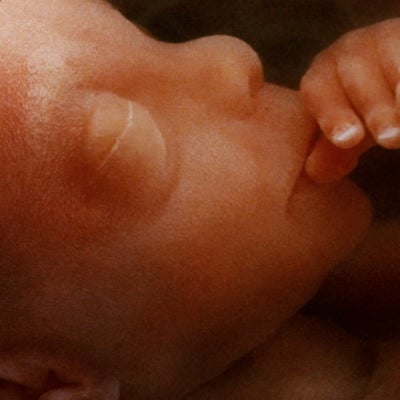Everyone celebrates their birthday. But every one of us already existed when he was still hidden from the world - in their mothers womb. This page presents some of the developmental stages that each person goes through during the prenatal period. The most significant development stages occur long before birth: in the first eight weeks after conception, when most body parts and all body systems begin to form and function.
The most important body parts, such as the head, thorax, abdomen and pelvis, as well as arms and legs, are present about four weeks after conception. Eight weeks after conception, the overall appearance of the developing human and many internal structures strongly resemble that of a newborn, except for the small size.
Pregnancy is not only a time when all parts of the body grow. It is also a time of preparation for survival after birth. Many everyday activities seen in children and adults begin in the womb - more than 30 weeks before birth. These activities include hiccups, touching the face, breathing movements, urination, right- or left-handedness, thumb sucking, swallowing, yawning, jaw movements, reflexes, REM sleep, hearing, tasting, feeling, and so on.
Pregnancy usually lasts 38 weeks from conception or 40 weeks from the first day of a woman's last normal menstrual period.
During fertilization, the sperm and the egg fuse and form a new organism1: your child. It is already determined what hair color it will have, what its fingerprints will look like, and whether it will be right- or left-handed. At the moment of fertilization, the baby's unique DNA is formed5. Eye color, hair color and gender are determined by it.
Implantation into the uterine wall (which is also called nidation or implantation) is completed one week after fertilization2,6.
The heart pumps the baby's blood to the brain and body. An active cardiovascular system exists and supplies the little body with oxygen via the blood. At this point, it beats between 105 and 121 times per minute. The brain develops very quickly. Arms and legs begin to grow. Normally, the next period would start now.2
Brain waves can be measured and recorded. Blood formation in the liver is now actively underway and contributes to the bright red color of the liver. The rapidly growing liver also begins producing lymphocytes3. This type of white blood cell is an important component of the developing immune system. At this point, the baby's size already measures about 1.5 cm from head to rump.
Fingers and toes are now fully formed. Most babies show the first signs of right- or left-handedness. Most of the baby's internal and external structures resemble a newborn baby's7.
The baby sighs and stretches regularly. It has started to yawn, move its tongue and suck its thumb. It drinks amniotic fluid regularly.
The unique fingerprint of the baby is formed3,4. Finger and toe nails begin to grow. Now all bones become harder.
Now it is possible to tell whether it is a girl or a boy! Lips and nose are fully formed. The baby can display complex facial expressions. The intestine of the fetus begins to absorb glucose and water from swallowed amniotic fluid.
The baby now has taste buds. The hands touch the mouth up to 50 times per hour.

The baby responds to touch. From head to heel it now measures 15 cm.
The pregnant woman can slowly feel the movements of the child. Weight: about 113 g. Size: about 17.8 cm from head to heel.
Slowly the child puts on baby fat to store energy.
Your child's heart has now beaten over 20 million times.
Breathing patterns, body movements and heart rate adapt to the daily routine. In the event of a premature birth, the child would be able to survive.
Loud noises can startle the baby and trigger increased movement, heart rate, and swallowing. The fetus also responds to pressure, movement, pain, heat and cold, taste and light.
The fetus becomes increasingly sensitive to different sound frequencies and can now distinguish many new sounds with greater accuracy.
Although in the womb there is no air for the child to breathe, it already performs the first breathing movements - exercises for later.
Rapid weight gain. The baby can already grip tightly and weighs about 3,000 g. The little heart has now already beaten over 50 million times.
Abortions are possible in Germany according to the so-called "medical indication" until birth. Possible cases are for example, the diagnosis of Down syndrome or cleft lip and palate8.
The baby continues to grow and gain weight until birth. At the regularly calculated date of birth, the baby usually weighs approx. 2,700 - 4,080 g and is approx. 46 - 53 cm tall.
Videos © 2001-2020 THE ENDOWMENT FOR HUMAN DEVELOPMENT, INC.
1 Developmental Biology, Scott F. Gilbert, 8. Aufl.